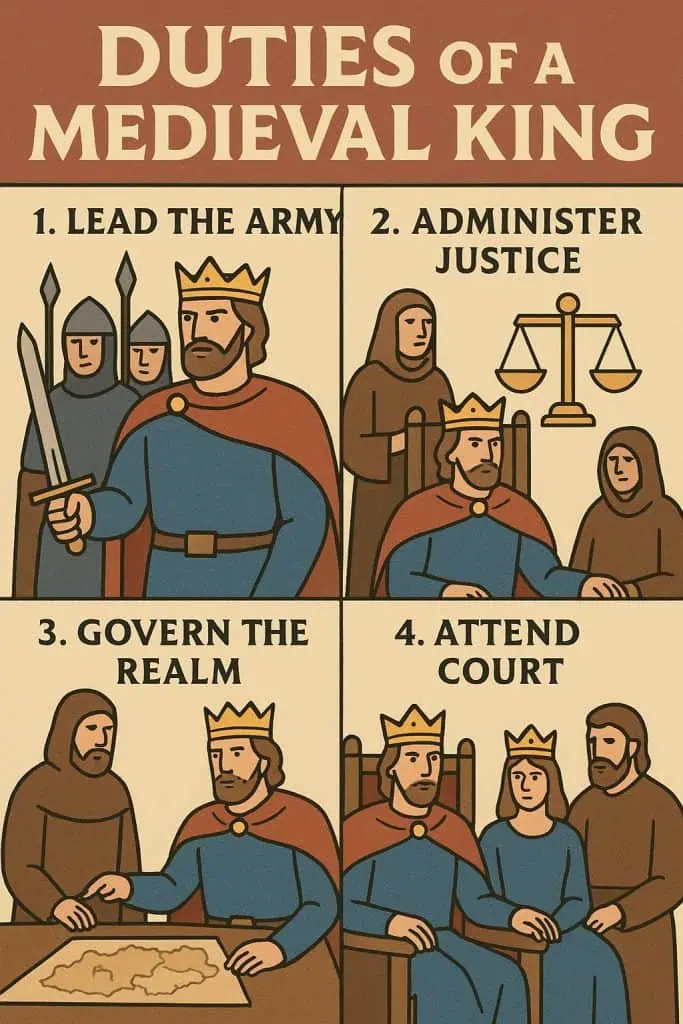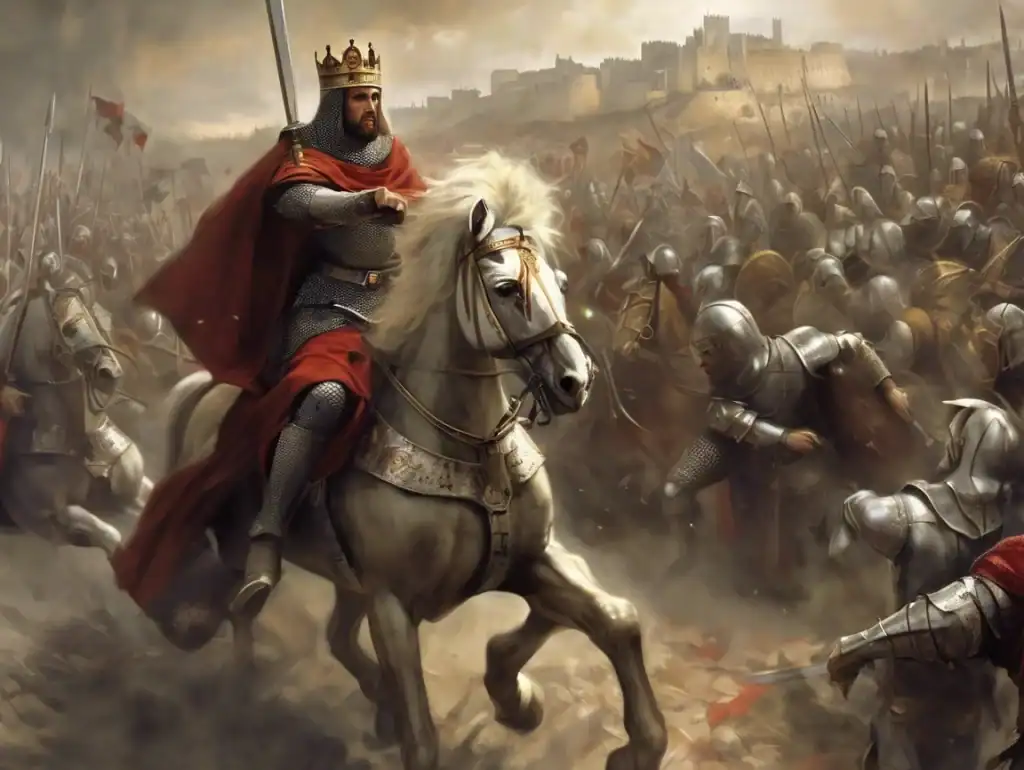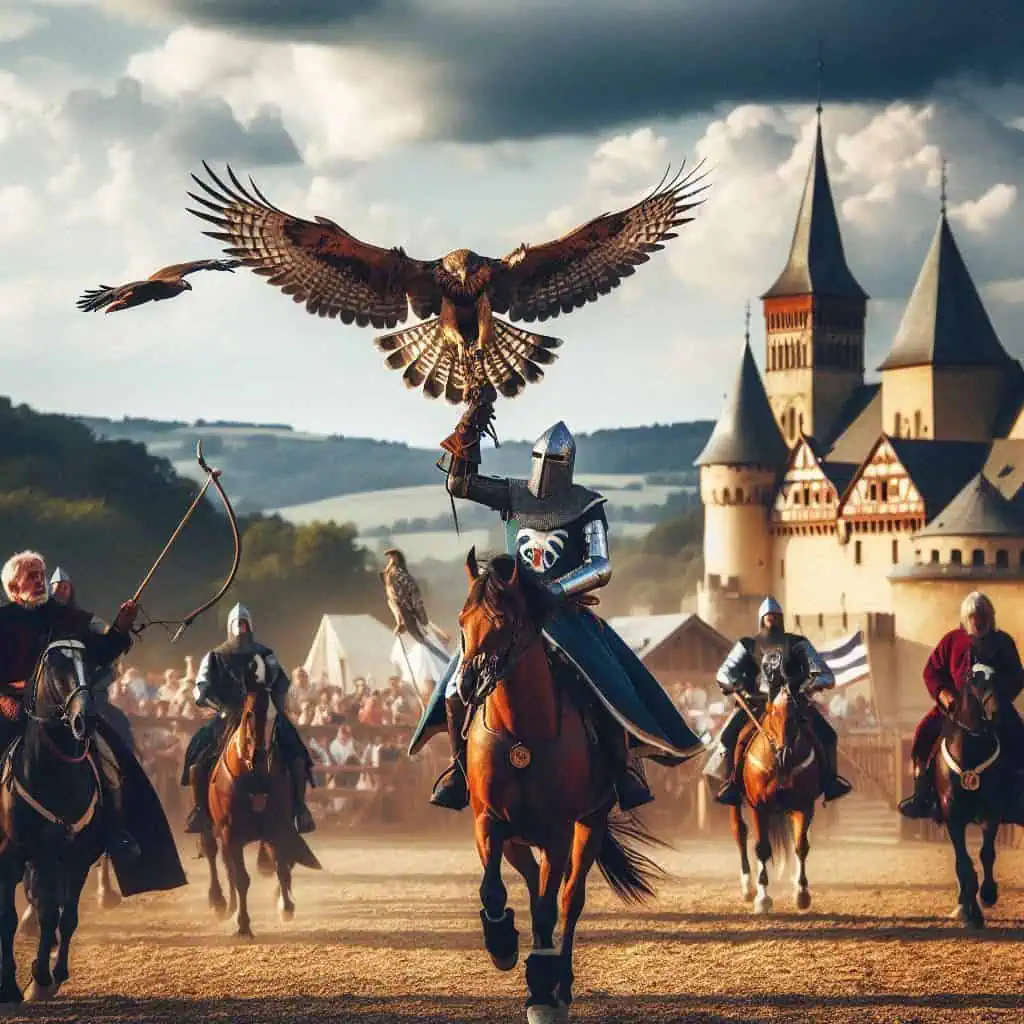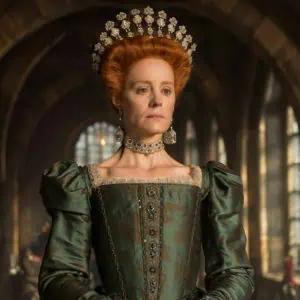A medieval king was the central figurehead of the state during medieval times, holding a position that combined political power, military leadership, and religious symbolism. But the authority of a medieval king was far from consistent—depending on the era, geography, and influence of other powers like the Church.

⚔️ Authority of a Medieval King
- In the early medieval period, the power of a medieval king was quite limited.
- The Catholic Church and the Pope’s authority often overshadowed royal power, sometimes even excommunicating kings who defied church doctrine.
- By the middle medieval period, kings such as King Henry II of England began asserting absolute authority.
- Many medieval kings ruled with near-total control, but they still had to negotiate with nobles and clergy to maintain their rule.
🧐 Did you know?
Some medieval kings claimed their authority came directly from divine right — meaning their power was granted by God himself!

🏰 Daily Life of a Medieval King
The daily routine of a medieval king was a balance of religious, administrative, and leisure activities:
- Morning prayers and mass in the castle chapel were compulsory to show piety and legitimize their reign.
- Kings would hold council meetings with nobles and advisors to discuss kingdom affairs.
- Hearing petitions and legal cases was part of ensuring justice.
- Leisure time often involved hunting in the forests, a sport reserved for nobility.
- When war broke out, the king was expected to lead troops into battle or at least oversee military strategy.
🐎 Funny fact:
King Edward II of England was famously distracted by his favorite horse, reportedly letting it sleep in the royal bed chamber!

🛡️ Duties of a Medieval King
The responsibilities of a medieval king were numerous and often life-or-death:
- The protection of the kingdom against invasions and rebellions was paramount.
- Kings swore to uphold justice by dispensing fair laws and punishing criminals.
- In Catholic realms, kings pledged to defend the Church and its interests.
- They also oversaw the economy, taxation, and infrastructure like castles and roads.
🎯 Strange fact:
King Louis IX of France banned the use of chess at court because he believed it distracted knights from their duties!

📚 Education of a Medieval King
Education was vital to prepare a king for leadership:
- From childhood, kings learned Latin, theology, and the liberal arts.
- Tutors trained future kings in swordsmanship, horsemanship, and hunting.
- Kings also studied diplomacy, governance, and military tactics.
🦉 Interesting fact:
King Richard the Lionheart was fluent in French, English, Latin, and even spoke some Arabic due to his Crusades experience.
🎲 Hobbies and Interests of a Medieval King
Medieval kings had diverse hobbies reflecting their status and skills:
- Horse breeding and jousting were prestigious activities.
- Kings played chess and other board games to sharpen their strategic thinking.
- Hunting and falconry were both sport and demonstration of power.
- Many kings enjoyed patronizing the arts, music, and poetry.
🦅 Did you know?
King Henry VIII kept a collection of trained falcons and hawks for hunting and entertainment.

👑 Clothing and Fashion of a Medieval King
Royal fashion was a key symbol of status and power:
- Early medieval kings wore loose, belted tunics and coats of mail, influenced by Roman styles.
- By the middle medieval period, robes with long, embroidered sleeves became standard.
- After the Crusades, luxurious fabrics like velvet and silk became popular.
- Kings wore pointed, closed shoes and extravagant crowns or circlets.
💎 Fun fact:
King Louis XIV of France popularized the wearing of red-heeled shoes as a symbol of royal privilege!

🏰 The Legacy of a Medieval King
The medieval king was more than just a ruler — he was the embodiment of the kingdom’s strength and unity. Though often dependent on nobles and clergy, kings left a lasting legacy through:
- The laws they enacted and the justice they administered.
- Their roles as military leaders and diplomats.
- Patronage of culture, architecture (castles and cathedrals), and education.
- Their distinctive royal attire and symbols of power.
What Made a Medieval King?
- Power: Varied from limited early authority to absolute middle medieval control.
- Duties: Protecting the kingdom, enforcing laws, and supporting the Church.
- Education: A blend of academic learning and practical skills like fighting and horsemanship.
- Hobbies: Hunting, games, and cultural pursuits.
- Fashion: From classical tunics to luxurious robes symbolizing their elevated status.
The medieval king remains one of history’s most fascinating figures — a blend of warrior, ruler, and symbol of divine right.ved to distinguish him from other people.
Who was the most powerful medieval king?
The most powerful medieval king is often considered to be Charlemagne, who ruled the Holy Roman Empire and expanded his kingdom across much of Western Europe. His reign marked a golden age of military conquest, religious reform, and cultural revival.
What were the main duties of a medieval king?
A medieval king was responsible for defending the kingdom, enforcing laws, collecting taxes, and maintaining alliances with nobles and the Church. He also led the military in times of war and acted as the final authority in legal disputes.
How did medieval kings get their power?
Most medieval kings claimed power through hereditary succession, but they also reinforced their rule through military strength, alliances, and the concept of divine right—the belief that their authority came directly from God.
What did a medieval king wear?
A medieval king’s clothing included rich fabrics like velvet, silk, and brocade, adorned with jewels, gold thread, and intricate embroidery. Their attire often featured long robes, crowns, and ornamental cloaks, symbolizing their status and authority.
Did medieval kings go to war?
Yes, many medieval kings personally led their armies into battle or oversaw war efforts. War was a central part of medieval rule, and military leadership was considered a crucial trait for a successful king.
What kind of education did a medieval king receive?
A medieval king was educated in Latin, history, religion, and the liberal arts, often by private tutors. He also trained in combat, horsemanship, hunting, and strategy to prepare for both governance and warfare.



